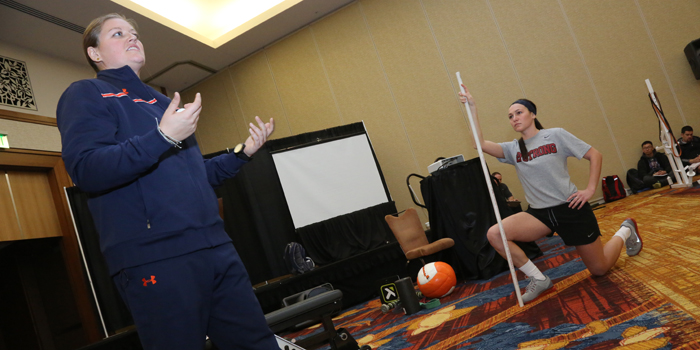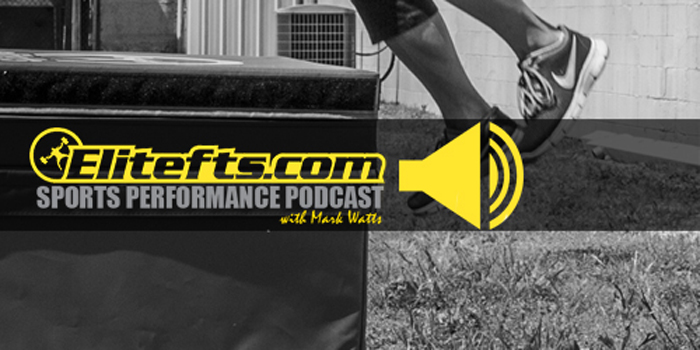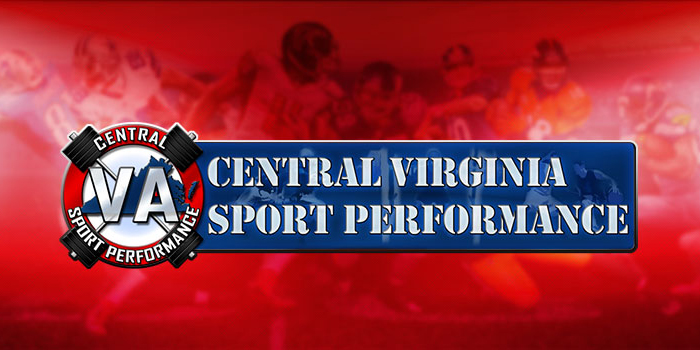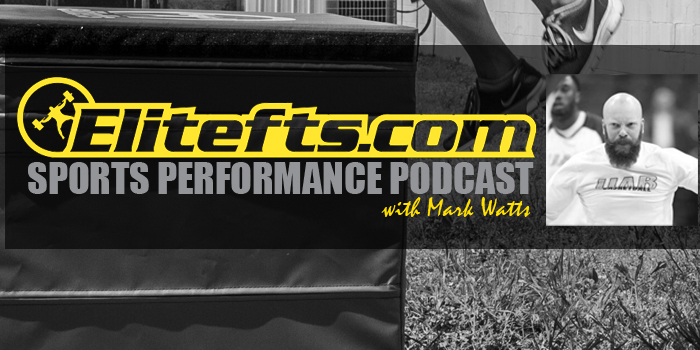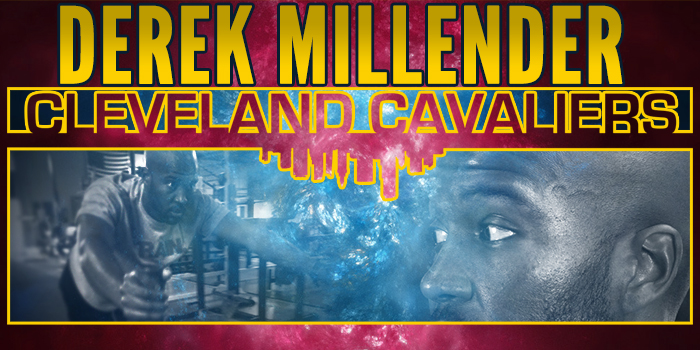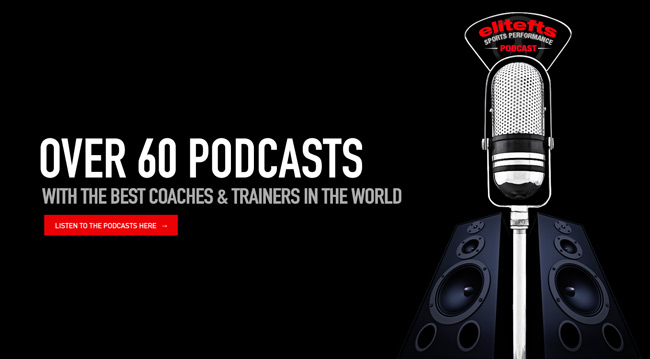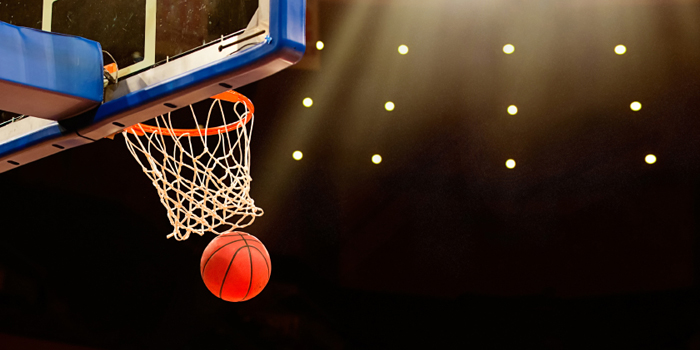
Sports Performance training and physical preparation in the sport of basketball has come a long way in the last few decades. Besides football, Division I College basketball coaches are some of the first to ensure they hire their own strength and conditioning coaches. The physicality of the game, the athleticism of the players, and the length of the season have all contributed to more education and collaboration between coaching staffs and their performance staffs. These podcasts, video interviews, and written Q&As will stand the test of time in terms of practical, cutting-edge information. Enjoy.
Shawn Windle Indiana Pacers
The Indiana Pacers are hard not to root for. They are as blue collar as you can get in today's NBA. They are high on work ethic and physicality and low on egos and superstars. One reason may be their Strength & Conditioning Coach Shawn Windle.
I finally met Shawn at the NSCA Coaches Conference In January after talking back and forth online. After talking with him in person and on the phone, one thing is evident; Windle has a passion for his athletes and the profession that is unrivaled.
This interview was both insightful and reassuring. Windle dispels some myths and lays a groundwork for an inside look into training NBA players. Enjoy.
Topics Covered in this Podcast
- What are the main objectives of the Indiana Pacer programs
- Adapting training based on the hectic NBA schedule
- What a typical training session looks like in-season
- Getting the rookies up to speed on the Pacer way
- Communication between personal trainers in the off-season
- How the game of basketball has changed
- Problem solving with the sports medicine staff
- Advice for young strength coaches
Megan Young Auburn University
Megan Young is one of the brightest young strength coaches in the profession. She has established herself as one of the most sought after clinicians as well. Coach Young has presented at several national conferences on a variety of topics ranging from programming to injury prevention.
If there is one thing I know about Megan Young is that she is one of the most passionate and driven coaches I know. She avoids labels like the plague and will not allow them to limit her or her athletes. She is a lifelong learner and has taken what she absorbed from her mentors and created her own system, her own values, and her own path in a profession that discards the half-hearted at every coaching change.
This podcast is diverse in subject matter with practical information. Although only a glimpse of what drives Megan to be the best possible version of herself, you will hopefully understand why she is one of the best. Get ready for some perspective....
Topics Covered in the Podcast
1. How Megan got into the profession
2. ACL Prevention Strategies
3. Using Block Training to Address Athlete's Needs
4. Limiting by Labeling
5. Challenges for Female Strength Coaches
6. How she sets up a training program
7. Coach Young's take on the 5 Exercise Drill
8. Block 0 Progressions
9. How she individualizes Workouts
10. Speed Training For Soccer
11. In-Season Training for Basketball
12. Sport Coach Communication
Ryan Horn Wake Forrest University
After meeting Ryan Horn for the first time at the CSCCa National Conference, I knew he would be successful. He had the passion and desire to learn from the best coaches he could find and had the courage to implement what he had learned in his own program. That is probably why Coach Horn has had the opportunities as a head strength and conditioning coach as such a young age.
Horn has paid his dues and learned from the likes of Tim Kontos and Todd Hamer. Those Kontos and Hamer are just two of the reasons Horn has developed such an unquestionable work ethic in the industry.
Another attribute that Horn has utilized is adaptability to go along with his humility. Solely in charge of Danny Manning's Basketball programs at both Tulsa and now at Wake Forrest, Horn has integrated his ever-evolving approach to performance into a culture of competitiveness and toughness.
After listening to this interview, I am sure you'll agree that Horn is wise beyond his years and the Demon Deacons will be in good hands for years to come.
Topics Covered in this Podcast
- Ryan Horn's Career Path
- Coming in to a new role at a new school
- Utilizing Technology in the Athletic Performance Setting
- "You can't manage what you don't measure."
- Off-Season Training
- The Upside-down Pyramid
- The role of the Athletic Performance Coach
- "My job is not to ask questions, it's to give answers."
- Assessment & Evaluation
- "I'd much rather teach, than correct."
- Off-Season carryover into the Season
- Perceptual vs Objective monitoring for readiness
- How to reach Coach Horn
Jay DeMayo University of Richmond
Jay DeMayo has done more for our profession than almost all coaches his age. After this interview, it's easy for me to understand why.
First, there is the Central Virgina Sports Performance Seminar in which DeMayo has amassed some of the most respected sports scientist and practitioners in the world. This list includes Dr. Vladimir Issurin, Dr. Anatoliy Bondarchuck, Henk Kraaijenhof, Dr. Natalia Verkhoshanksy, Val Nasedkin, and Dr. Michael Yessis.
Second, DeMayo has been a catalyst among connecting coaches through networking and online communication. DeMayo is a strong advocate of continuing education and makes every possible concession to improve himself as a coach while helping others.
Lastly, I have never met any coach who doesn't have the highest amount of respect and admiration for Coach DeMayo. This acknowledgement has less to do with his knowledge, experiences, or the success of his teams and athletes and more to do with the integrity and selfless passion Jay DeMayo applies to all facets of his professional life. Jay DeMayo is everything a collegiate strength and conditioning coach should be.
Topics Covered in this Podcast
- Coach DeMayo’s Career Path
- Off-Season Training for Basketball
- Monitoring Athletes
- Acclimating First-Year Players to Training
- The Transition to In-Season Training
- Program Considerations for Swimming and Diving
- Training Divers vs Swimmers
- Plyometrics of Swimming
- Special Exercises for Swimming
- The CVASP Seminar
- Advice for Young Strength Coaches
- How to Contact Coach DeMayo
XXXXXXXXXXXXXXXXXXXXXXXXXXXX
Cory Schlesinger University of Alabama Birmingham
Even after gaining national recognition during the NCAA tournament as "Crazy Beard Guy," Cory Schlesinger shifted the limelight to his athletes and their efforts. Schlesinger knows all too well the countless hours it took to get the UAB Blazers a first-round upset victory during March Madness and who should be credited for it. His beard, his demeanor, and intensity may have blown up on Twitter, but his ego would never replicate that.
To say Schlesinger was thrown into the fire of the strength and conditioning field is an understatement. His situation as a young strength and conditioning coaches forced Schlesinger swallow his pride and seek out the expertise of Mark Uyeyama and Dan John. Schlesinger has given credit to all the mentors that have given him an opportunity and their knowledge to make him a better coach.
If you really want an in-depth and unique perspective on training basketball players (or any sport athlete at that), this podcast covers it all. Cory goes through all phases of his programming and specific exercises he utilizes. His real-world advice for young coaches in the profession is invaluable. Cory Schlesinger has risen up through the ranks of strength and conditioning for the right reasons. Listen to this interview and you'll understand why.
Topics Covered in this Podcast
- The Nautilus Checklist
- A Strength Coach at Age 19
- Intern to Director
- The Advantage of Being An Assistant
- General and Foundational Strength
- Noon Ball to a New Job
- The Coyote Kettlebell Club with Dan John
- Primal Movements — Motor Skills
- Movement for Body Awareness
- Complexes for Multiple Modalities
- Assessments for Basketball Players
- Joint by Joint from the Ground Up
- You Don't Need to Be a Genius to See Dysfunction
- Modifications by Height
- Olympic Lifting Variations for Taller Players
- Multiple Squat Variations
- The Wingspan Phenomena; Training Spiders
- Off-Season = Most Variation
- Changes in Basketball Culture
- Physicality Can Dictate Play
- The Beauty of the Young Sport Coach
- The Southern Culture in Basketball
- Players Are Not Educated — And It's Not Their Fault
- Technology in Sports Performance
- Technology Reinforces What You Already Know
- How Weight Training Can Turn into Regeneration
- Experience Beats Technology
- Perceived Maxes Based on Velocity: Fast and Smooth
- Programming Strength Training In-Season
- Off-Season Training
- Linear Periodization Using RPE
- Olympic Complex
- Conditioning through Extensive Complexes and Sled Work
- Transparency
- Find the Universal Language
- Mentoring
- Learning How to Learn
- Identify How Others Learn
- Feel to Replicate
- Give Credit Where Credit Is Due
- How to Reach Cory
The Cleveland Cavaliers have had some ups and downs over the last decade. From all-time-greatest draft picks to heartbreaking departures to heroic returns, the Cavs have been through it all. The one thing they have yet to accomplish is an NBA Championship — but it looks like one is coming soon.
As anyone affiliated with sports knows, the quest for a title encompasses every member of the organization, from the players on the floor, to the coaches, all the way to the office staff. The Cavaliers clearly understand this concept, and are constructing the future of their organization accordingly.
Among the members of the Cavaliers' staff vying for a championship is Head Strength and Conditioning Coach Derek Millender. Millender joined the Cavs in 2010 as Assistant Strength and Conditioning Coach and has worked his way up since.
Earlier this week, Millender traveled to Columbus to meet with elitefts' own JL Holdsworth. After training at The Spot Athletics, Millender sat down with elitefts Director of Eduction Mark Watts to talk about Millender's journey in strength and conditioning and the techniques he uses to work with a variety of players in the NBA and the Cleveland Cavaliers.
Dennis Cuturic Duquesne University
After meeting with Dennis Cuturic at a Starbucks outside the A.J. Palumbo Center, two things stood out about him—his passion and his enthusiasm for strength and conditioning. Cuturic has been the strength and conditioning coach for the Dukes’ men’s and women’s basketball teams for the past four years. Before arriving at Duquensne, Cuturic was an assistant at his alma mater Cleveland State and was a graduate assistant at Utah State earning a master’s degree in corporate wellness. Before earning his bachelor's degree in exercise science, Cutruic played professional basketball in Croatia for three seasons.
Mark Watts (MW): Dennis, we talked about programming during our visit. You spoke about your teaching progressions using isometrics and why you evolved into a three day a week program. Can you give us your thoughts on this?
Dennis Cuturic (DC): A major goal of any training program should be to progress your athletes from the time they set foot in the weight room as freshmen to their senior season. There should be a noticeable difference between “newbies” and upper classmen on any team, especially with respect to focus, efficiency, and tempo in the weight room. Young athletes who are transitioning from high school to collegiate sports experience huge increases in volume and intensity of training as well as game speed. Successful training must prepare the joints, namely the ankle, knee, and hip, to accommodate these greater demands, and I believe this can be achieved through improving the poor isometric control seen in the majority of new college athletes.
A house can't be built without first having a solid structure to support the framing. Likewise, we can't progress freshmen to a more advanced training regimen without the proper foundation. At Duquesne, isometric strength is the foundation that we lay to advance strength and overcome plateaus. This foundation is achieved through maintaining and overcoming one’s own body weight. From there, we can increase the duration of isometrics and incorporate movement into it. For example, a progression for body weight Bulgarian split squats is to begin with a one- to two-second pause at the bottom of the movement, move to isometric lunge holds, and then incorporate a lunge jump depending on the athlete’s training status/age. These types of movements make up 90–95 percent of a post-season program because they recruit a huge number of muscle fibers/motor units, teach the athlete to assume the correct biomechanical position of the specific exercise, and increase the range of motion.
MW: One of the topics that we discussed involved in-season basketball strength and conditioning as it relates to recovery, speed and agility, jump training, and overall performance. You had a very interesting chart from watching your players in games. Can you explain your findings and how you’ve used that information?
DC: A common assertion among many strength coaches is that basketball players jump too much during their competitive season, so we shouldn’t include jumps in a training program. However, having played basketball competitively for almost twenty years, I wasn’t convinced. I believe that any good strength coach should question anything believed to be “fact” and should confirm this fact with first-hand experience. For my own investigation, I created a chart to represent the number of times during each home game that a specific player jumped, accelerated, and decelerated. I chose two Duquesne players in similar positions (e.g. a point guard and a shooting guard, a power forward and a center, or a shooting guard and a small forward) and I compared them. I didn't count any slow transitions from offense to defense or any movements that stemmed from a slow jog as an acceleration or deceleration.
For one full Division I collegiate basketball season (twelve home games), the results were as follows:
My conclusion was that the number of jumps performed during a competitive basketball season isn’t high enough to indicate that including additional jumps in a training program would be detrimental.
MW: Dennis, final question. You gave me three characteristics that a strength and conditioning coach must have in order to be successful. You were very animated when we were talking about this, and people in Starbucks were staring at us. Could you please elaborate on these points?
DC: I believe that any successful strength coach must be knowledgeable, passionate, and coach caring. One of my first pieces of advice to any new strength coach is to “know your stuff.” A strength coach should be able to explain the what, why, and how behind his training philosophy. This is especially important because athletes and other coaches will question you at every turn. If a strength coach can explain to an athlete why a specific exercise can reinforce and improve a movement in his or her sport while preventing injury, thus allowing more time on the court and less time in the training room, the athlete is more likely to buy in to the program.
When I think about passion, I think of when I first entered the field. I was like a deer in the headlights but with guns blazing! I’ve loved my job from day one, and it’s this passion that makes it easy to get up every morning and get to work. A huge part of what we do as coaches is keeping the athletes motivated, and the more passionate a coach, the more contagious that passion is. You may have the best program in the world, one that guarantees results, but it isn't any better than having no program at all if you can’t motivate the athletes to give 100 percent effort every day.
Finally, coach-caring is probably the most important quality to me. I treat my athletes like I treat my own kids, mostly through “tough love.” I believe that the athlete will only care as much about the program and training as I care about them. Each athlete comes from a completely different background and family dynamic, so I make a point of investing my time to find that out. I ask them about their families and where they’re from, what high school they came from, what their major is, and so on. This establishes a strong relationship with each athlete and allows for the development of trust. It’s this trust and rapport that fuels what we do in the weight room.
Articles by Mark Watts
Olympic Lifting for Athletes: Using Static Holds to Improve Technique
Head Games: Training the Neck to Reduce Concussions
The Fastest Sport on Ice: Things You Don't Know About Bobsled
Tips to Crush the Combine Tests
An In-Season Training Guide for Baseball Pitchers
Individual Training in a Team Setting
Off-Season Training for Football (with 8-Week Program)
What is Really Wrong with Strength and Conditioning
The Last Sports Performance Podcast
Olympic Lifting for Athletic Performance
Sports Performance Coach Education Series
WATCH: How to Find a Strength and Conditioning Job
WATCH: Becoming a Mentor to Young Coaches
WATCH: The Four-Step Coaching Process
WATCH: 5 Strategies to Perform More Work in Less Time
WATCH: Why Communication is Key to a Better Coaching Career
WATCH: A Better Way to Train High School Athletes
WATCH: How to Implement Auto-Regulatory Training in a Team Setting
WATCH: Pre-Workout Circuits to Optimize Training Time and Maximize Performance
WATCH: Hypertrophy Circuits for Athletes in a Team Setting
Coaches Clinics
WATCH: Two Bench Press Mechanical Drop-Sets for Hypertrophy
WATCH: Two Lateral Speed Drills with Bands to Improve Change of Direction
WATCH: Adjusting the Glute-Ham Raise to Optimize Your Training
WATCH: Basic Linear Speed Acceleration Drills in a Team Setting
WATCH: Kettlebell Training for Team Sports









